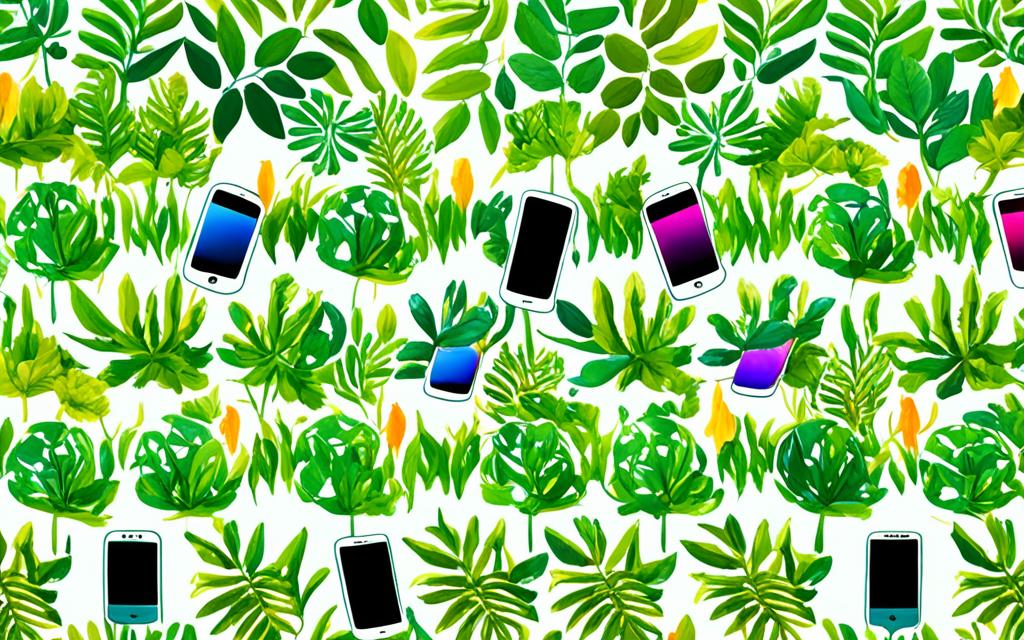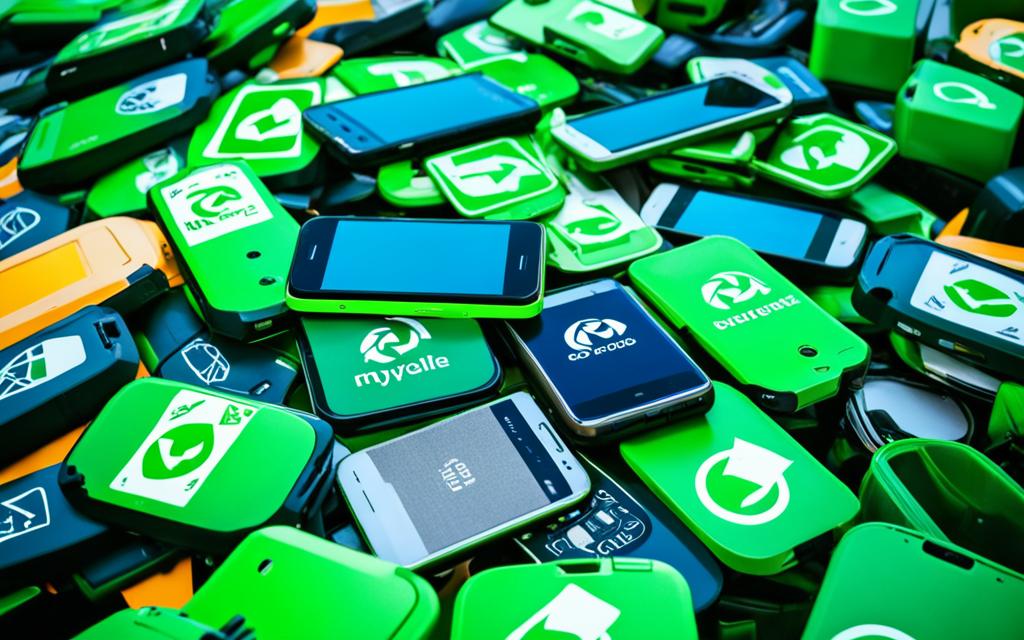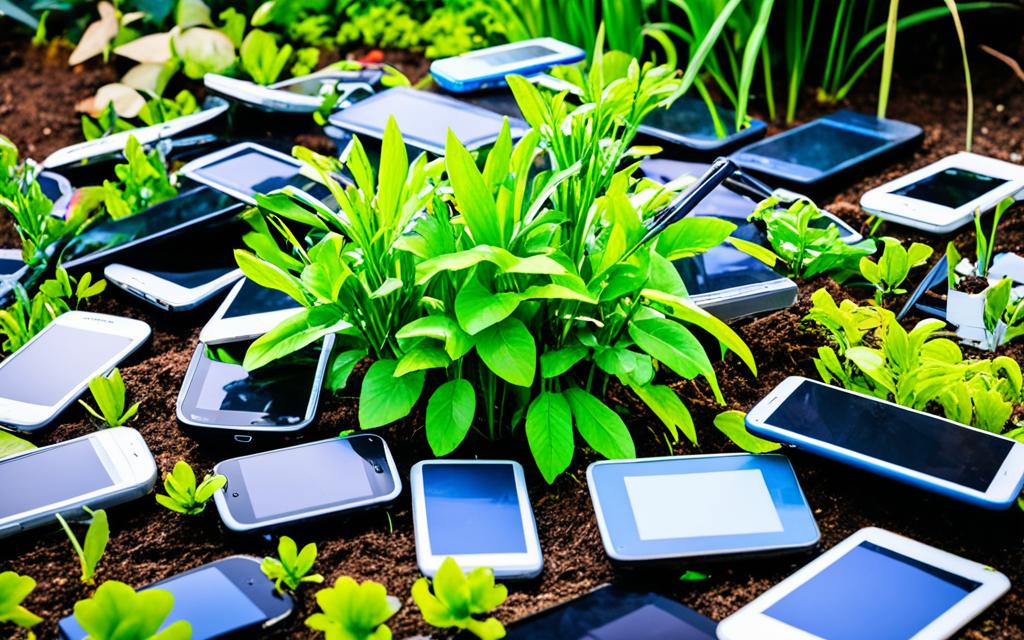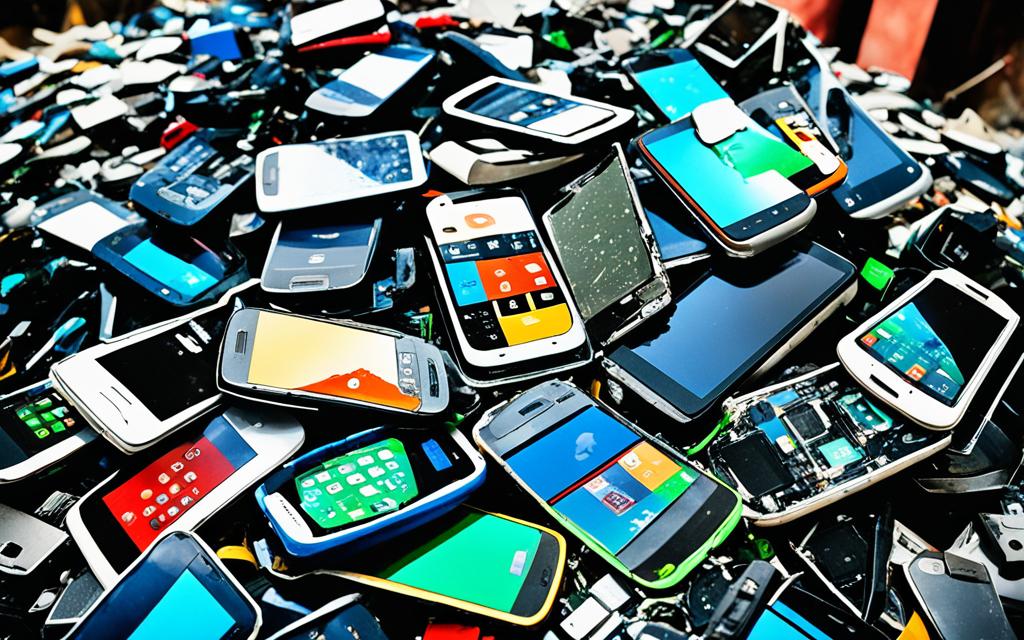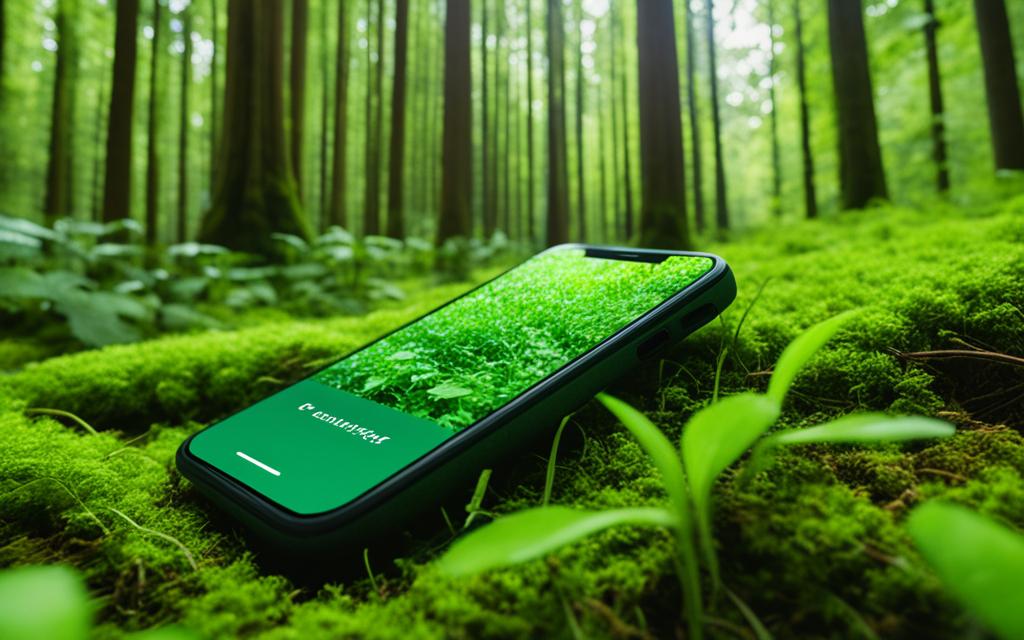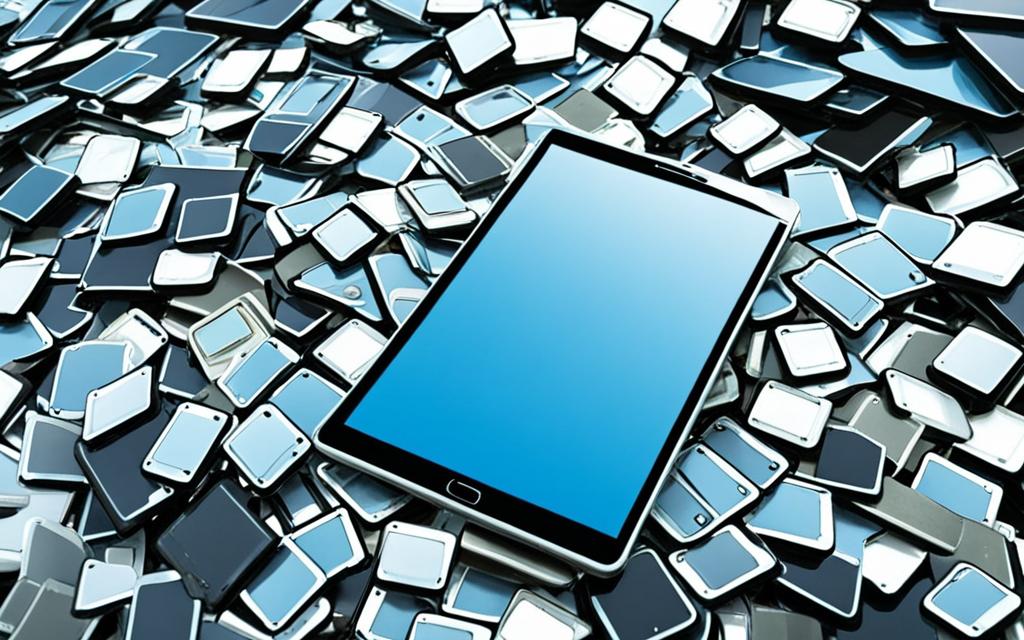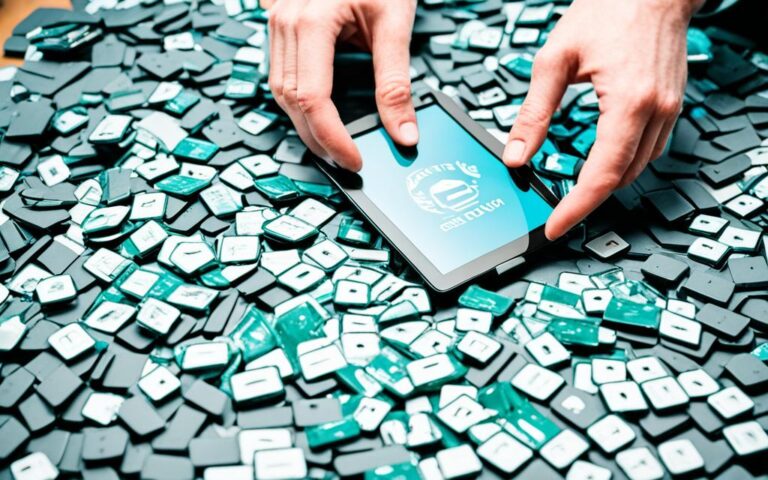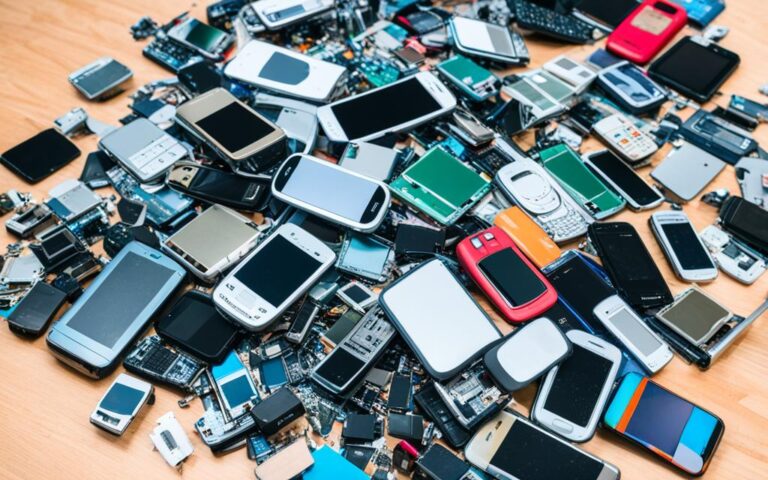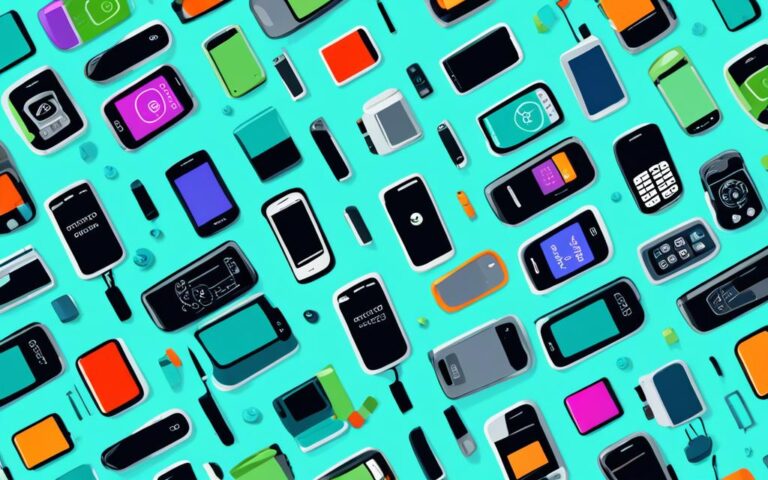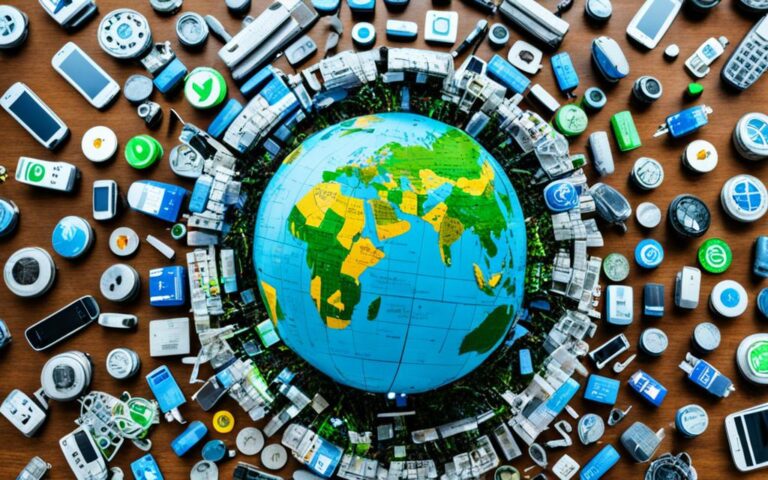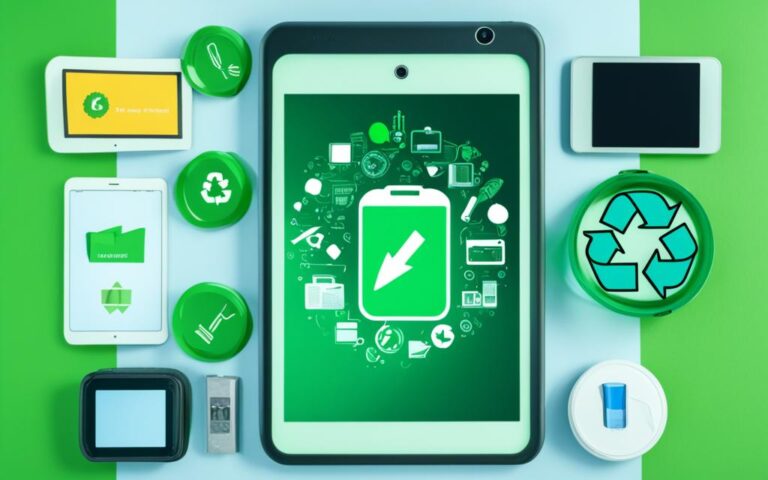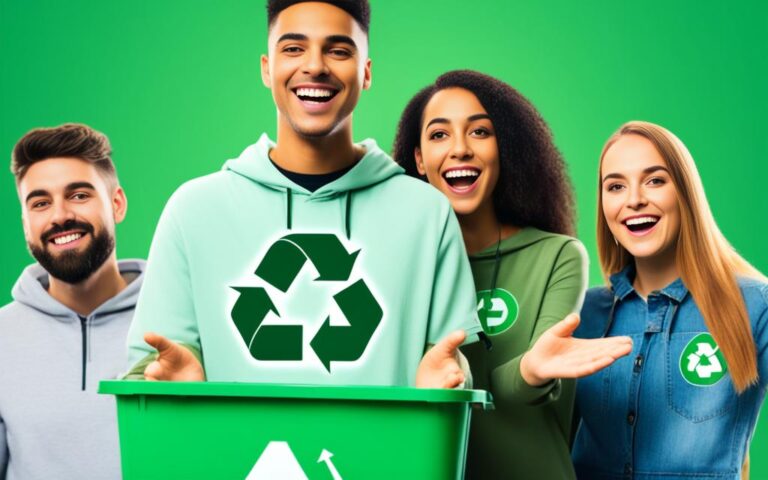The Impact of Mobile Phone Recycling on Wildlife Conservation
In today’s digital age, mobile phones have become an integral part of our lives. However, the rapid advancement of technology also comes with environmental consequences, particularly for wildlife conservation. It’s time to consider the impact of mobile phone recycling on protecting our precious wildlife.
Mobile phone recycling is a simple yet powerful solution to mitigate the environmental harm caused by the disposal of electronic waste. By recycling our old devices, we can contribute to wildlife conservation and protect endangered species, such as gorillas, from the consequences of destructive mining practices.
Sadly, the extraction of minerals like coltan, prevalent in mobile phones, has devastating effects on gorilla habitats and populations. Mining activities destroy crucial ecosystems, displacing wildlife and endangering their survival. By embracing mobile phone recycling, we can reduce the demand for these destructive minerals and safeguard the homes of our fellow creatures.
Furthermore, mobile phone recycling initiatives generate much-needed funds for gorilla conservation projects. These programs not only protect and restore habitats but also support on-the-ground initiatives, research, and education campaigns. Every recycled device brings us one step closer to a sustainable future for both our electronic gadgets and the magnificent wildlife we share this planet with.
How Mobile Phone Recycling Supports Gorilla Conservation
Smartphones and other electronic devices play an essential role in our daily lives. However, not many people are aware that these devices contain coltan, a mineral compound that powers small electronics such as mobile phones and tablets. The mining of coltan can have devastating effects on gorilla habitats and contribute to habitat destruction and conflict.
But there is a solution – mobile phone recycling. Recycling small electronic devices reduces the demand for coltan, thereby helping to protect gorilla habitats. By recycling your old mobile phones, you are directly contributing to gorilla conservation efforts.
Initiatives such as Gorillas on the Line and the Gorilla SAFE program are making significant strides in this area. These programs focus on on-the-ground protection, research, and education to ensure the survival of gorillas in their natural habitats.
By recycling your old mobile phones, you not only reduce the demand for coltan but also help raise funds for gorilla conservation efforts. With these funds, organizations can support initiatives such as anti-poaching patrols, habitat restoration, and community development programs in areas where gorillas reside.
“Mobile phone recycling is the key to safeguarding gorilla habitats and ensuring their long-term survival.” – Dr. Jane Goodall
The Impact of Mobile Phone Recycling on Gorilla Habitats
The demand for coltan continues to drive destructive mining practices in gorilla habitats. These activities not only destroy their natural environment but also contribute to the decline of gorilla populations. By recycling our old mobile phones and reducing the demand for coltan, we can create a positive impact on gorilla habitats.
The following table illustrates the connection between mobile phone recycling, gorilla conservation, and coltan:
| Benefit | Explanation |
|---|---|
| Reduces habitat destruction | By recycling mobile phones, the demand for coltan decreases, resulting in less mining in gorilla habitats. |
| Supports gorilla populations | Recycling old mobile phones raises funds for gorilla conservation projects, enabling protection and research efforts. |
| Minimizes conflict | By reducing the demand for coltan, mobile phone recycling helps in mitigating conflicts arising from mining activities in gorilla habitats. |
As the table demonstrates, mobile phone recycling has a direct correlation with gorilla conservation and the protection of their habitats. By taking part in recycling programs and spreading awareness, we can make a tangible difference in the fight to save these magnificent creatures.
The Role of Zoo-based Mobile Phone Recycling Programs
Zoos around the world have implemented mobile phone recycling programs as a way to engage visitors and support gorilla conservation. These programs use education campaigns, displays, and keeper talks to encourage visitors to recycle their old phones. By recycling their phones, visitors can directly contribute to the conservation of gorillas and their habitats.
Education campaigns in zoos play a crucial role in raising awareness about the impact of mobile phone recycling on gorilla conservation. Displays showcasing the connection between mobile phones and gorilla habitats provide visitors with a tangible understanding of how their actions can make a difference. Through informative signage and interactive exhibits, visitors gain a deeper appreciation for the importance of responsible electronic waste management and its impact on gorilla survival.
Keeper talks are another effective tool used in zoo-based mobile phone recycling programs. Renowned experts and passionate conservationists deliver engaging talks, emphasizing the significance of gorilla conservation and the role of mobile phone recycling in protecting these magnificent creatures. These talks not only educate but also inspire visitors to take action and recycle their old phones for the benefit of gorillas and their habitats.
“Recycling your old phone may seem like a small act, but it can have a big impact on gorilla conservation. By participating in mobile phone recycling programs at zoos, visitors become part of a global effort to protect these endangered animals and preserve their natural habitats.” – Dr. Jane Goodall, Primatologist and Conservationist
The Effectiveness of Zoo-based Mobile Phone Recycling Programs
Studies have highlighted the effectiveness of zoo-based mobile phone recycling programs in changing recycling behaviors and increasing phone donations. Research conducted at various zoos has shown that keeper talks significantly influence visitors’ decisions to recycle their old phones. By providing compelling information and connecting visitors emotionally with the cause, these talks result in a notable rise in phone donations.
For example, a study conducted at a leading zoo found that after attending a keeper talk on gorilla conservation, the number of donated phones increased by 30% compared to days without the talk. This demonstrates the power of education and the ability of zoo-based programs to inspire action and make a real impact on gorilla conservation efforts.
The Impact of Visitors’ Phone Recycling
By recycling their old phones through zoo-based programs, visitors directly contribute to gorilla conservation. The funds generated from phone recycling initiatives support various conservation projects, including habitat restoration, anti-poaching efforts, and education campaigns in local communities. Additionally, the reduced demand for coltan, a mineral commonly found in mobile phones, helps reduce the destructive mining practices that threaten gorilla habitats.
Moreover, visitors’ participation in phone recycling reinforces the message that individual actions can create meaningful change. It fosters a sense of personal responsibility and environmental stewardship, encouraging others to follow suit and contribute to the larger mission of gorilla conservation.
Zoo-based Mobile Phone Recycling Programs: Visitor Impact
The impact of zoo-based mobile phone recycling programs extends beyond the direct benefits to gorilla conservation. Engaging visitors in such initiatives fosters a deeper connection to wildlife and instills a sense of environmental responsibility. Visitors leave the zoo with a greater understanding of the issues faced by gorillas and the urgent need for conservation. They become ambassadors for change in their communities, spreading awareness and encouraging others to recycle their old phones.
Furthermore, the success of zoo-based programs has paved the way for collaboration between zoos and other organizations working towards gorilla conservation. These partnerships lead to increased resources, knowledge-sharing, and the development of innovative initiatives to further protect gorillas and their delicate ecosystems.
The Future of Zoo-based Mobile Phone Recycling Programs
As the importance of electronic waste management and gorilla conservation continues to be recognized, zoo-based mobile phone recycling programs have a promising future. Continued investment in education campaigns, interactive exhibits, and keeper talks will enhance visitors’ engagement and increase phone donations. Additionally, collaborations between zoos, electronics manufacturers, and environmental organizations can drive the development of sustainable solutions for electronic waste and ensure the long-term success of gorilla conservation efforts.
Through the collective efforts of zoos, visitors, and conservation organizations, zoo-based mobile phone recycling programs will play a pivotal role in protecting gorillas and preserving their habitats for future generations.
The Importance of Cellphone Recycling for Gorilla Survival
Cellphone recycling plays a vital role in the survival of gorillas, especially in the Congo Basin. This region is home to the endangered gorillas whose habitats are under threat due to the mining of minerals used in electronics, such as coltan. The demand for coltan contributes to the destruction of gorilla habitats and exacerbates their decline. By participating in cellphone recycling programs, we can help reduce the demand for mining in gorilla habitats, ultimately protecting these magnificent creatures and ensuring their survival.
Currently, only a small percentage of unwanted cellphones are being recycled. However, with increased education and awareness, we have the power to make a significant positive impact on gorilla conservation. Every recycled cellphone makes a difference, as it reduces the need for further mining and the destruction of gorilla habitats. By taking a simple action, such as recycling our old cellphones, we contribute to their protection and help secure their future in the wild.
Gorilla Survival in the Congo Basin
The Congo Basin is a critical stronghold for gorillas, housing both the Eastern and Western gorilla species. These stunning creatures are heavily threatened by habitat loss, poaching, and the illegal wildlife trade. Mining activities, driven by the global demand for minerals used in electronics, further exacerbate these threats. The extraction of coltan, in particular, not only destroys gorilla habitats but also fuels conflict and instability in the region.
“Cellphone recycling programs are an essential tool in safeguarding gorilla survival. By reducing the demand for coltan and other minerals obtained through destructive mining, we can protect vital gorilla habitats and contribute to their conservation.” – Dr. Jane Goodall
Every recycled cellphone is a step towards reducing the demand for minerals and preserving gorilla habitats. It is through our collective efforts that we can secure a future for these incredible creatures. By raising awareness about cellphone recycling and its impact on gorilla survival, together, we can make a difference.
| Impact of Cellphone Recycling on Gorilla Survival | Benefits |
|---|---|
| Reduces the demand for mining in gorilla habitats | Preserves gorilla habitats and reduces habitat loss |
| Prevents destruction of gorilla habitats due to mining | Protects gorillas from further decline |
| Raises awareness about the importance of gorilla conservation | Encourages broader support for conservation efforts |
| Contributes to the sustainability of gorilla populations | Ensures long-term survival and biodiversity |
By recycling our cellphones, we not only help gorillas but also promote sustainable practices and protect the biodiversity of the Congo Basin. It is essential to spread the word about the importance of cellphone recycling for gorilla survival and encourage others to join in this crucial effort. Together, we can make a lasting impact and secure a brighter future for gorillas and their habitats.
The Future of Mobile Phone Recycling and Gorilla Conservation
While mobile phone recycling is a crucial step in the journey towards responsible electronics consumption, it represents just one part of a larger puzzle. In order to create a sustainable electronics lifecycle, it is imperative for electronics companies to prioritize ethical sourcing, energy efficiency, modular design, and ease of recycling.
By sourcing materials ethically, companies can ensure that their production processes do not contribute to habitat destruction or conflict, thus protecting the habitats of gorillas and other endangered species. Additionally, investing in energy-efficient technologies reduces environmental impact and promotes long-term sustainability.
Modular design, which allows for easy disassembly and replacement of parts, enables devices to be repaired and upgraded instead of discarded. This not only extends their lifespan but also reduces electronic waste.
Ethics and sustainability must also extend to the end of a device’s life. Electronics companies need to develop comprehensive recycling programs that incentivize consumers to recycle their old devices. By increasing consumer demand for ethically sourced and recyclable products, industry changes can be driven, and the impact on gorilla conservation can be maximized.
International collaborations play a crucial role in the future of mobile phone recycling for gorilla conservation. By working together, organizations and governments can share best practices, resources, and knowledge, amplifying the impact of mobile phone recycling programs. Ongoing education campaigns are also essential to raise awareness and encourage widespread participation.
To summarize, the future of mobile phone recycling and gorilla conservation depends on industry responsibility, consumer demand, international collaboration, and education. It is through these combined efforts that we can ensure a sustainable future for both the electronic devices we use and the endangered species we strive to protect.
Conclusion
Mobile phone recycling is a powerful tool in the realm of wildlife conservation, specifically when it comes to safeguarding endangered species like gorillas. By recycling electronic devices, we can effectively reduce the demand for minerals that are obtained through harmful mining practices. This, in turn, contributes to the protection and preservation of gorilla habitats.
Zoo-based mobile phone recycling programs and education campaigns have already made significant headway in terms of altering recycling behaviors and involving visitors in vital conservation efforts. However, there is still much work to be done. Increasing public participation and encouraging greater industry responsibility are crucial to ensure a sustainable future for both mobile phone recycling and gorilla conservation.
As we move forward, it is important to recognize that mobile phone recycling is not the entirety of responsible electronics consumption. Ethical sourcing, energy efficiency, modular design, and ease of recycling all need to be prioritized by electronics companies to create a truly sustainable electronics lifecycle. By driving consumer demand for ethically sourced and recyclable products, we can inspire positive changes within the industry. Additionally, global collaborations and continuous education campaigns will magnify the scale and impact of mobile phone recycling programs, bolstering gorilla conservation efforts.
FAQ
How does mobile phone recycling impact wildlife conservation?
Mobile phone recycling has a positive impact on wildlife conservation, particularly for endangered species such as gorillas. By recycling electronic devices, including smartphones and tablets, the demand for minerals sourced through destructive mining practices is reduced, which helps protect gorilla habitats.
Why is coltan mining a threat to gorilla habitats?
Smartphones and other electronic devices contain coltan, a mineral compound used to power small electronics. Mining for coltan can contribute to gorilla habitat destruction and conflict. Recycling small electronic devices reduces the demand for coltan, thereby protecting gorilla habitats.
How do zoo-based mobile phone recycling programs support gorilla conservation?
Zoos around the world have implemented mobile phone recycling programs as a way to engage visitors and support gorilla conservation. These programs use education campaigns, displays, and keeper talks to encourage visitors to recycle their old phones. Studies have shown that these campaigns can be effective in changing recycling behaviors, with evidence that keeper talks at zoos significantly increase the number of donated phones.
Why is cellphone recycling crucial for gorilla survival in the Congo Basin?
In the Congo Basin, mining for minerals, such as coltan used in electronics, threatens gorilla habitats and contributes to their decline. Participating in cellphone recycling programs helps reduce the demand for mining in gorilla habitats, protecting these endangered species.
What is the future of mobile phone recycling and gorilla conservation?
While mobile phone recycling is a vital step towards wildlife conservation, there is a need for increased participation and industry responsibility. Electronics companies need to prioritize ethical sourcing, energy efficiency, modular design, and ease of recycling to create a sustainable electronics lifecycle. Increased consumer demand for ethically sourced and recyclable products can drive industry changes and maximize the impact of mobile phone recycling programs for gorilla conservation.

